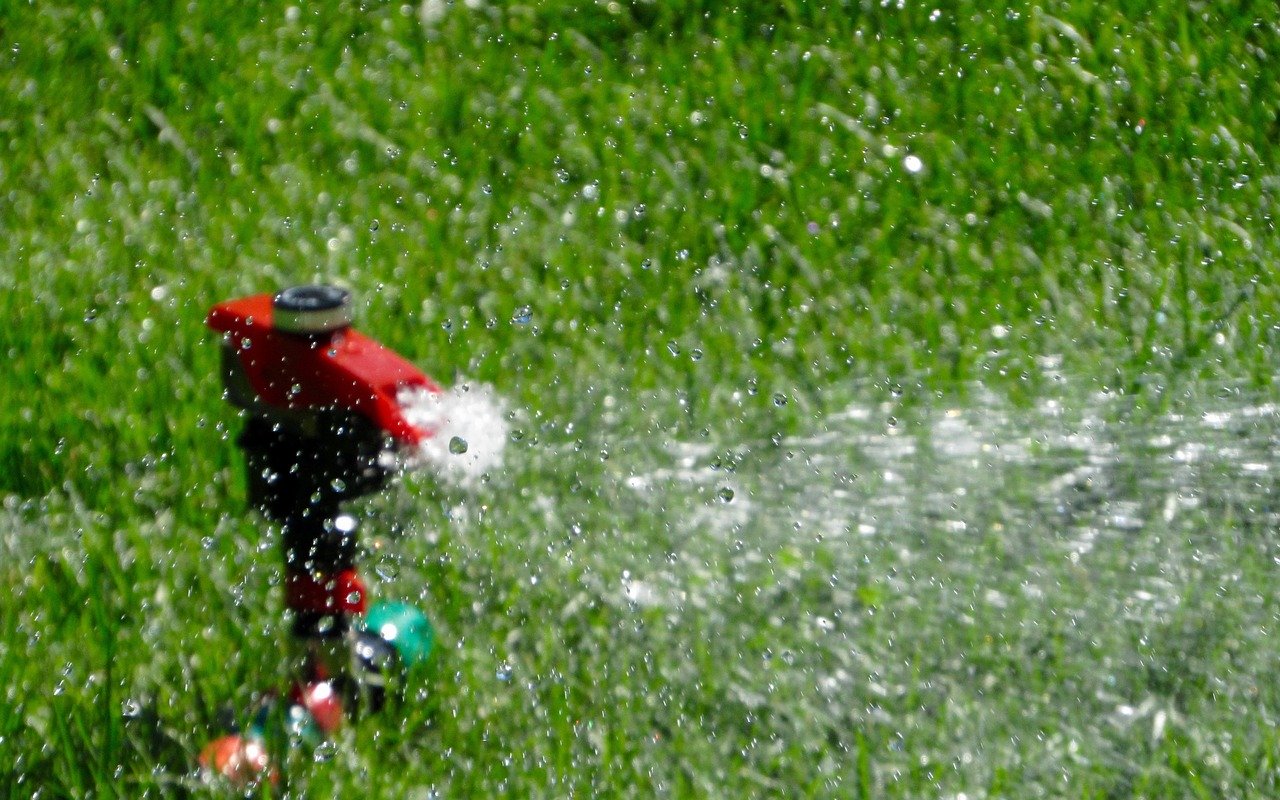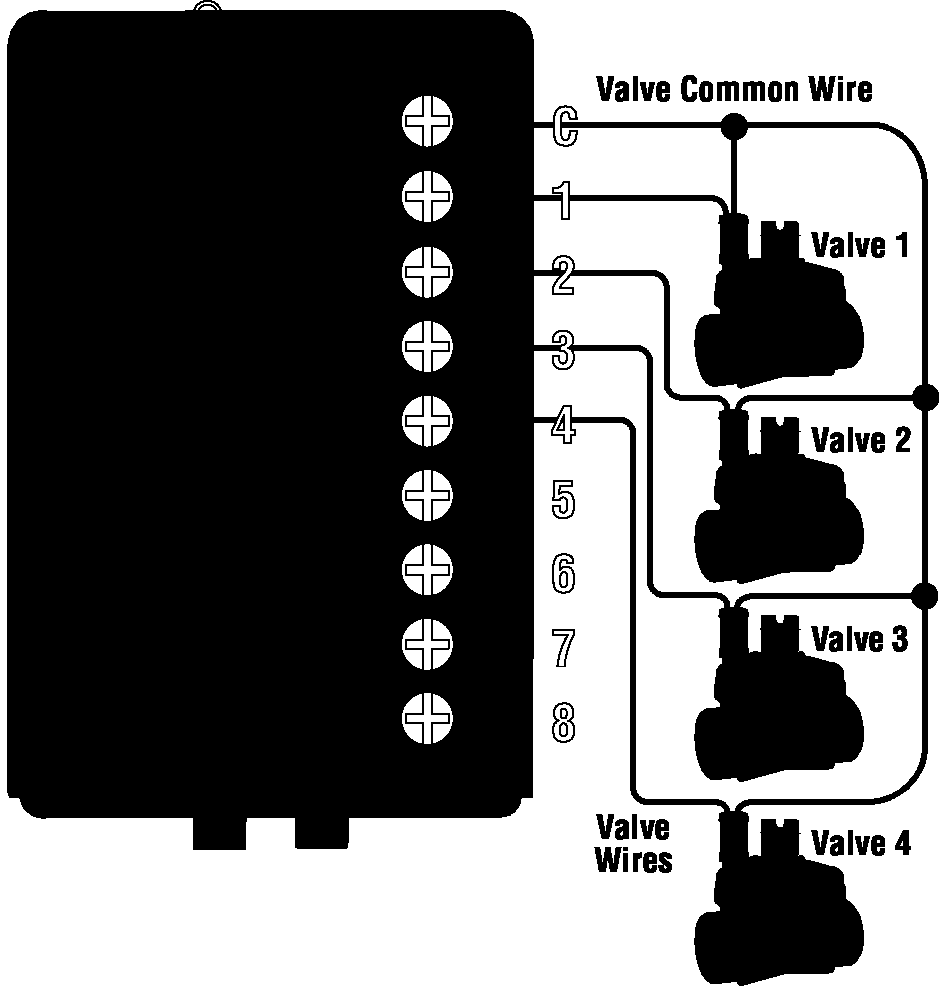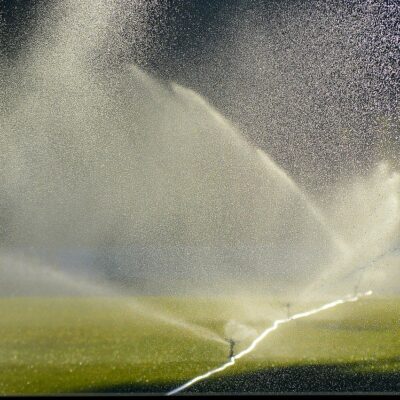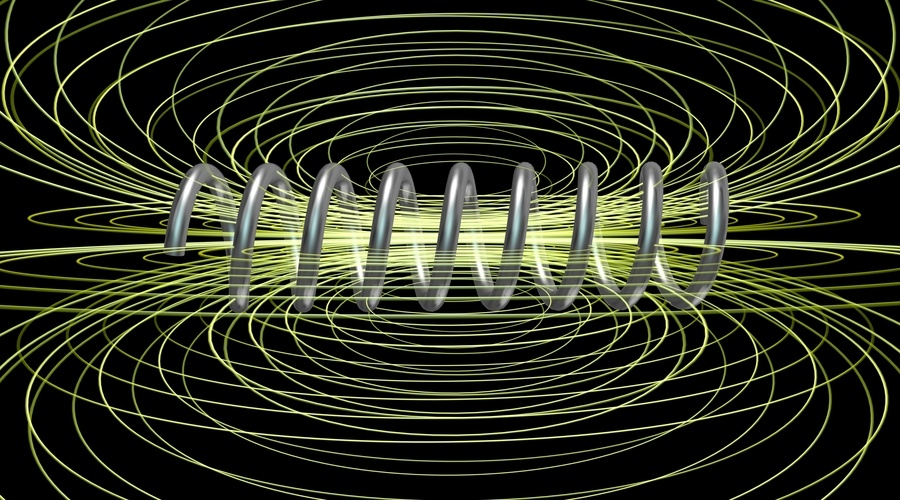Year on year, we are all used to electronics getting cheaper and giving more value. Just take mobile phones as an example. However, these advances haven’t found their way into the control of medium-sized landscape and playing fields irrigation.
The current way is to have a controller with many terminals, each with a wire to leading to an individual solenoid on an electrically activated water valve. A ‘common’ wire completes the circuit, daisy-chaining to the other side of each solenoid, then back to the controller. This type of controller is called Multi-wire.
Although simple to understand, this method suffers from several significant disadvantages:
- New valves cannot be added without routing an extra wire for each, right back to the controller
- If the bundle of cables is damaged, it is a skilled and time-consuming job to join them all up again (and get it right!).
- The cost of the wire and installation labour is significant.
The golf market has, for 3 decades, circumvented all these problems by embracing ‘decoder’ technology. This works by routing a single 2-wire cable around the whole area to be controlled. Everywhere there needs to be a valve, a ‘decoder’ is fitted between the cable and the valve.
Each decoder is installed, pre-numbered, with a unique ‘address’ like a telephone extension number. Down the main 2-wire cable is sent power and impressed on this, a signal with the “extension number” of the valve to be turned on. All decoders hear these numbers, but only the matching one turns on its valve. (fig.2)
Advantages of Decoders
- New valves can be added by splicing a new cable spur into the existing 2 wire cable anywhere near and adding a new decoder with a different number.
- Lightning protection in decoders has become very robust indeed.
- Any breaks in the cable can be repaired without high technical expertise.
Disadvantages of Decoders
- Typically, the price of golf -type controller and decoders is 5 to 10 times the cost of a multi-wire. For example, the Hunter ICC multi-wire controller with 24 outputs lists at £324, while a popular golf controller and 24 decoders list at £2367; a ratio of over 7:1.
However, this is not the whole story. All valves must be connected to the controller somehow and this can represent very significant additional project cost.
In the UK, a common cable type is multi-core telephone cable ‘direct bury’. In the USA it is 18AWG insulated single core wire.
At each valve location, the outer sheath of the multi-core telephone cable is carefully slit lengthways, the common wire and the relevant solenoid wire identified, teased out of the gel-filled inner, cleaned, cut, stripped and spliced onto the solenoid wires. This is fiddly, time consuming and skilled work, thus representing a significant cost.
For a 24 station system, this can add perhaps £1000. In contrast, the labour involved installing decoders is far simpler and is significantly cheaper, as is the 2-wire cable.
Thus, the relative installed costs in the above example are more like: Multi-wire controller £1850, golf-type controller with decoders £1973.79; a ratio of 1.06:1




